
Days are getting shorter and darker. This week we’ve had a few freakishly heavy but short rain spells here so it’s a perfect time to indulge in some baking, don’t you think? On this account, I made a delicious vegan babka filled with dark chocolate that reminds me of home – thanks to its history of Jewish immigration, Poland has a tradition of sweet yeast-leveaned bakes like this. This is timely as I happen to be going home next week, for the first time in over 3.5 years! I am really looking forward to it. Anyway, back to babka….
While this vegan babka tastes indulgent and may look impressive, it really isn’t that hard to make provided you have handled yeasted dough before, like bread, burger buns etc. And if you are a luckly owner of a standing mixer then this recipe will come together really quickly. But don’t worry, that’s not necessary as I don’t own one either and kneaded many many – to the benefit of my neighbours – of these by hand.
So if don’t own a standing mixing and are up for a challenge, I invite you to make this beauty by hand and really immerse yourself in the process – make it your mindfulness exercise – it’s incredibly rewarding. Below, you’ll find detailed, step-by-step photos of the process to guide you through the steps and put your mind at ease when things don’t look like they are coming together – they will! First, though, let’s quickly run through the ingredients’ list to clear up any confusion.
MORE ABOUT THE INGREDIENTS
FLOUR: I have tried making this babka with 100% all purpose flour and 50% all purpose and 50% bread flour and my preference is definitely the latter. The reason being that all purpose flour doesn’t contain much gluten (check protein content on the packaging, AP flour tends to have around 8-10 g protein and bread (also known as strong) flour 12-16g. Higher gluten content helps with the rise, it produces fluffier crumb and a crispier shell.
Unfortunately for some of you, gluten is instrumental to the success of this bake so you cannot simply swap gluten flour for gluten-free flour, it will not work. I am sure you could achieve good enough result with a combination of gluten-free flours, starches and gums, but that’s a new recipe that needs to be developped and beyond the scope of this one, I’m afraid.
SUGAR: a moderate amount of superfine (known as caster in the UK) is used to sweeten the dough, some more is added to the filling to balance the bitterness of dark chocolate and cocoa and another portion is used to create a clear water syrup which is used to glaze the cake after baking. Not only does it add extra sweetness and makes the cake look pretty, it also seals in moisture keeping it fresh for longer.
YEAST: yeast is what gives this bread rise and a lovely, fluffy texture. It is important to use the correct type of yeast and to activate it correctly. I tend to use instant yeast, which is a type of powdered yeast that can be added directly into the flour and does not require any prior activation. If you were to use what is labelled as active dry yeast, you need to activate it in a portion of the liquid allocated for this recipe first, before adding to the dry ingredients.
VEGAN BUTTER: babka is a type of enriched bread meaning it is a basic bread dough with a heavy dose of solid fat (traditionally butter), which gives it a much better mouthfeel. When it comes to making the vegan version, you can simply use vegan butter block (Naturli is my favourite) or coconut oil (I like using this fragrance-free version), which stays solid in cold temperatures. I personally prefer the former especially when incorporating the fat by hand, which can get very messy and coconut oil, which starts melting from the heat of your hands, makes it even more so.
DARK CHOCOLATE: quality dark chocolate filling, which melds layers of the dough together during baking makes this sweet vegan babka truly irresistable.
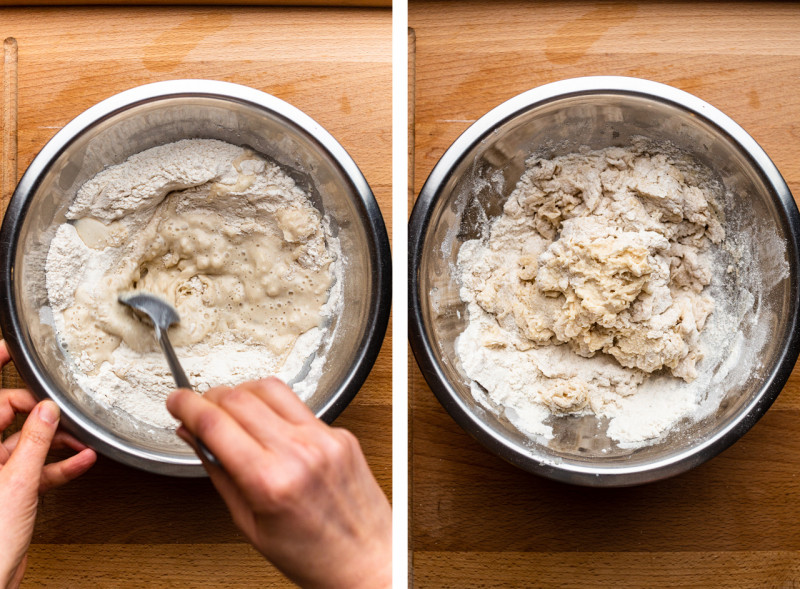
Combine both flours, instant yeast, sugar and salt in a mixing bowl. Once combined, trickle in plant milk while mixing it into dry ingredients with a spoon first, then – once scraggly dough forms – empty the bowl’s content onto a lightly dusted counter. Knead until elastic and smooth, for about 8 minutes if kneading by hand or 3 minutes on medium speed in a standing mixer.

Once your dough is smooth, shape into a flat disc. Place some of the cubed vegan butter in the middle of the disc and fold the edges of the disc over the butter. Carry on kneading, adding more butter as you go along. It’s a lot of butter so it will get really messy (see right hand side photo), but the dough will eventually come together. A bench scraper or an old (clean) bank card comes in useful at this stage.
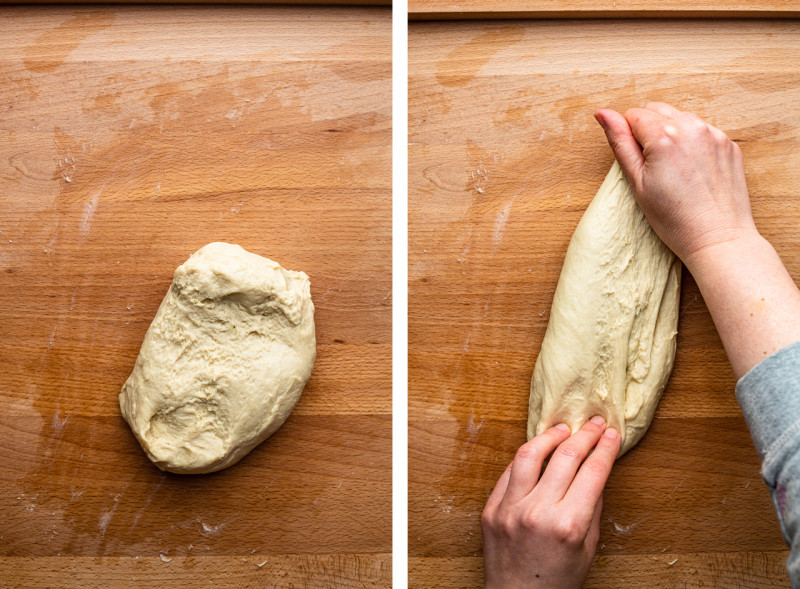
I found that from the point I started incorporating the fat, the dough needed as long as 20-25 minutes of vigorous kneading to become smooth and supple again. Make sure you use a good kneading technique to strech the dough in all directions – hold one end of the dough with the heel of your non-dominat hand and stretch the other end with your dominant hand. Gather the dough together into a ball, rotate that ball by 30 degrees and start streching in another direction. Repeat until the dough is smooth and supple again.

Once your dough is smooth and supple again, form it into a bowl and place in a lightly greased mixing bowl, grease the dough ball and cover the bowl with a kitchen towel. Place in the fridge overnight to proof slowly. If you haven’t got time for an overnight proof, simply proof it at room temperature until the dough has doubled in size (2-3 hours, but that depends on the ambient temperature).
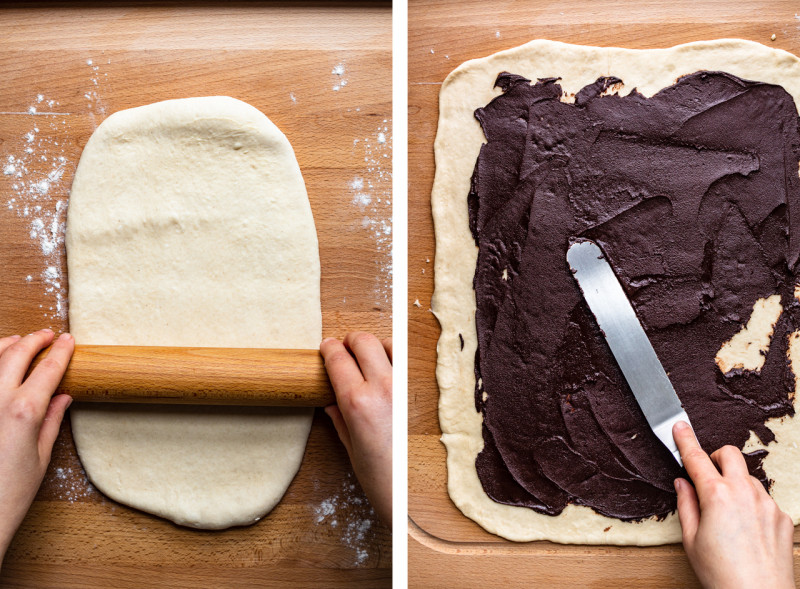
Punch the air out of the risen dough, then roll it dough out, on a lightly floured surface, until you have a large rectangle measuring approximately 40 cm / 15.5 inches by 35 cm / 13.5 inches. Spread warm chocolate filling on the rolled out dough, leaving a 1.25 cm / 0.5 inch margin all over.

Roll the dough into a tight snake along the shortest edge. When you almost finish the roll, paint a bit of water on the bit of dough that has no filling on it and close the roll firmly. Using a sharp knife, cut the snake in half lengthwise (you may also want to cut the ends off like I did).

Arrange the two strands of dough so that the cut sides face up. Criss cross one stand over the other in the middle, then twist the two strands again and again, until you have a nicely looking braid (see below).

Transfer to a baking tin and allow it to proof in a warm place for about 1 hr – it should increase about 20% in volume. Once proofed, bake for about 45 minutes (covering the top with foil if it’s browing too much too quickly).

Once out of the oven, glaze your babka with a simple sugar syrup, allow it to cool down completely (I know that’s a challenge) before slicing.
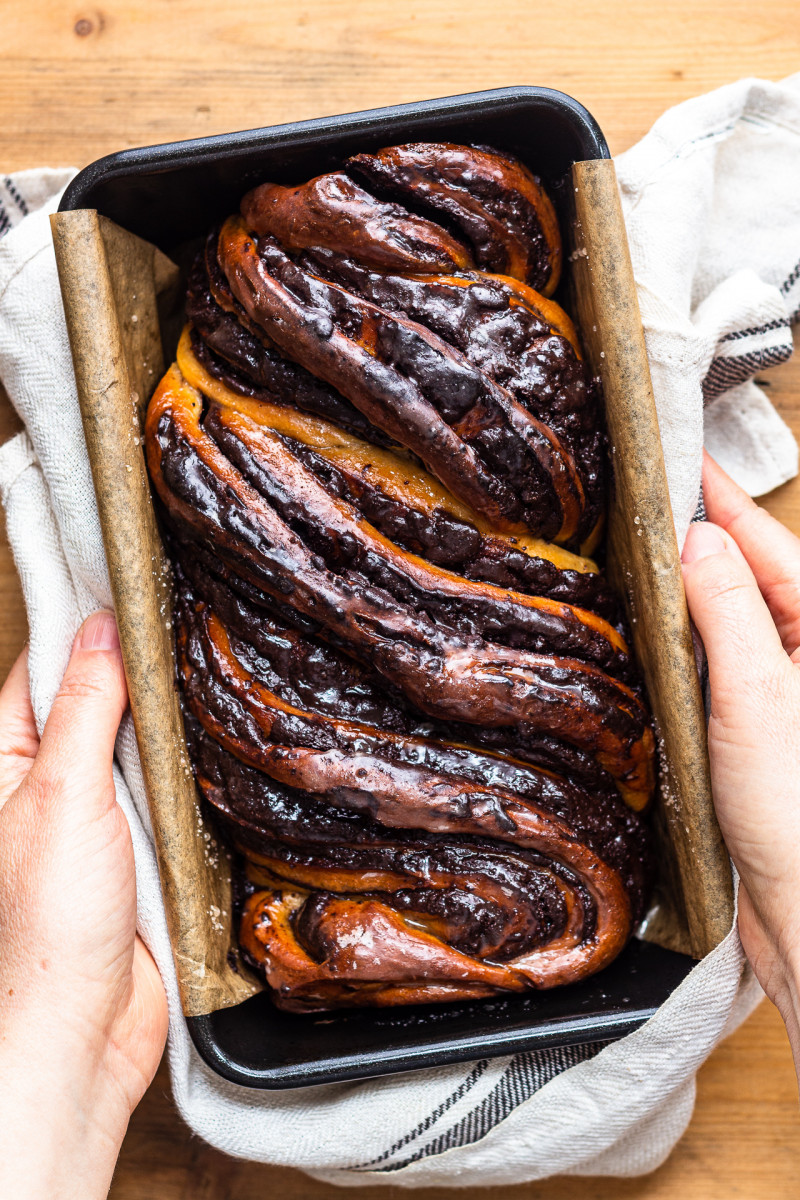
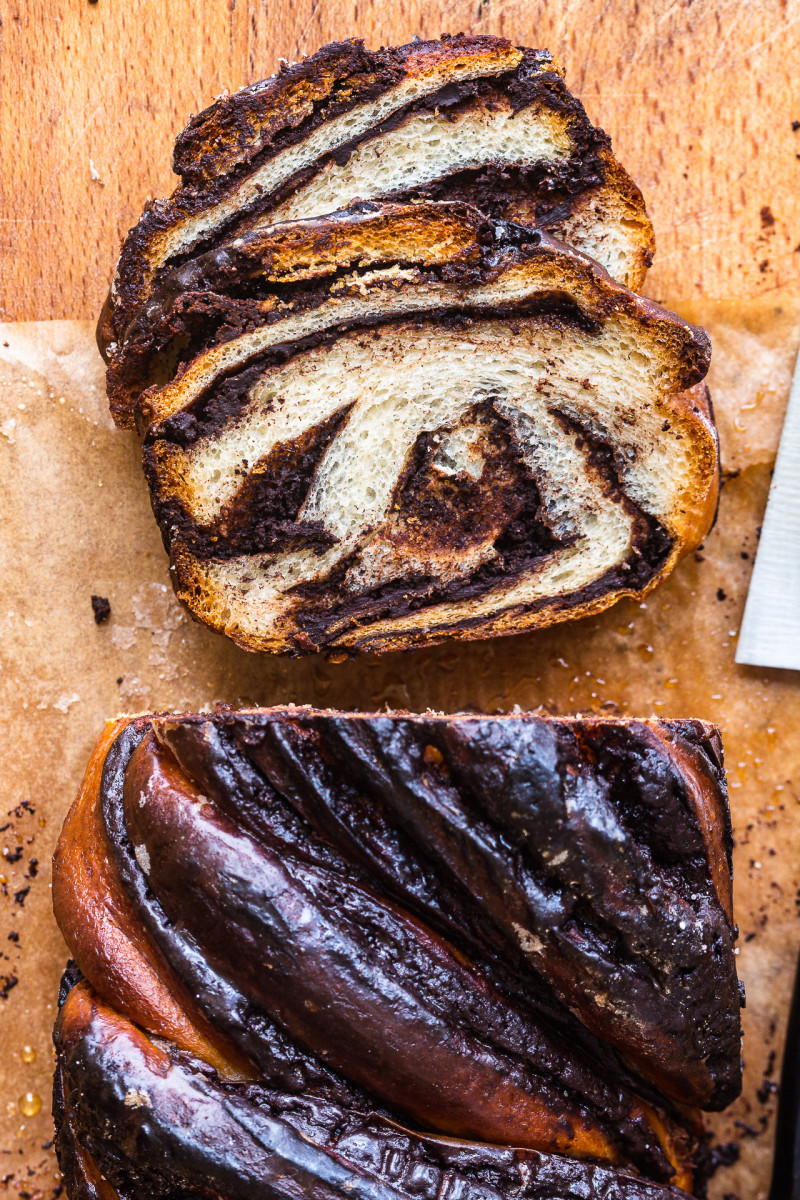
- 125 g / 1 cup bread (strong) flour
- 125 g / 1 cup plain flour, plus extra for dusting
- ¼ tsp fine salt
- 50 g / ¼ cup caster (superfine) sugar
- 8 g / 2¼ tsp (1 sachet) instant dried yeast*
- 160 ml / 2/3 cup cold plant milk (I used soy)
- 75 g / ¼ cup + 2 tbsp vegan butter* (I used Naturli), cut into small cubes
FILLING
- 80 g / 2.8 oz vegan dark chocolate (I used 70% cacao)
- 50 g / ¼ cup vegan butter* (I used Naturli)
- 30 g / 2 tbsp icing sugar, more to taste
- 15 g / 0.5 oz cocoa powder
- ¼ tsp fine salt (skip if using salted vegan butter)
GLAZE
- 50 g / ¼ cup caster (superfine) sugar
- 30 ml / 2 tbsp water
- Place both flours, salt, sugar and instant yeast in a large bowl. Mix well. You can use a standing mixer with a dough hook instead of making it by hand.
- Add 150 ml (or ½ cup + 2 tbsp) of cold plant milk. Mix well with a spoon and then your hands. If the dough is not coming together and there are dry bits, add a touch more plant milk, teaspoon by teaspoon. I used the total of 160 ml (½ cup + 2 tbsp + 2 tsp) of plant milk but the exact amount depends on how absorbent your flour is so go by feel. If using a mixer, add milk gradually while running the mixer on the lowest speed, until the dough comes together.
- Once the dough has stuck together, turn it out on to a work surface and knead until elastic and smooth – about 8 minutes by hand or for 3 minutes on a medium setting if using a mixer. This first phase of kneading is important as it allows the gluten to develop before you add fat, which hinders gluten development.
- Form the dough into a flat disc and pile some of the vegan butter on top of it, close the dough over the butter and start kneading adding more butter cubes as you go along. If using a mixer, add butter gradually while processing on the lowest speed. Occasionally, you may need to scrape the bowl down and reposition the dough.
- At this point the dough will be very slippery and messy and look like it’s been ruined (see photos). It will come together again, but it needs to be patiently kneaded for about 20-25 minutes if kneading by hand or about 10 minutes if using a mixer.
- Once the dough has come together again, place in a lightly oiled bowl (oil the top of the dough ball too), cover with cling film and let it proof in the fridge overnight. Alternatively, you can allow it to rise in a warm place until it doubles in size (about 2-3 hrs).
- Just before you are ready to roll out your dough, melt chocolate and vegan block in a bowl suspended over a pot of barely simmering water. Sift in icing sugar, cocoa powder and salt and fold them in gently until you have a homogenous ganache.
- Roll the dough out, on a lightly floured surface, until you have a large rectangle measuring approximately 40 cm / 15.5 inches by 35 cm / 13.5 inches.
- Spread warm chocolate filling on the rolled out dough, leaving a 1.25 cm / 0.5 inch margin all over.
- Roll the dough into a tight snake along the shortest edge. When you almost finish the roll, paint a bit of water on the bit of dough that has no filling on it and close the roll firmly (that’s important). First rim 2 cm / 1 ” off at both ends, then using a sharp knife, cut the snake in half lengthwise.
- Arrange the two strands of dough so that the cut sides face up. Criss cross one stand over the other in the middle, then twist the two strands again and again until you get a simple braid (see photos in my post).
- Tuck both ends in slighly and squeeze them with your hands gently so that they are well sealed.
- Transfer to a baking tin and allow it to proof in a warm place until the dough increases in volume by about 20% – it will take about 1 hr.
- Heat up the oven to 160° C / 320° F. Bake for about 45 minutes, check up on it after 35 minutes – if it’s browning too much, cover the top with a piece of kitchen foil and carry on baking.
- Once out of the oven, immediately glaze it with sugar syrup. Allow to cool off completely before slicing. Store in an air-tight container for about 3 days.
SUGAR GLAZE
- Combine sugar and water in a small pot. Place on a low heat and stir constantly until sugars dissolves completely. Apply to a hot babka with a pastry brush.
*YEAST: make sure to use the correct type of yeast and to activate it properly (if needed). I use instant yeast, which requires no prior activation and is added directly into the flour. If using active dry yeast, you need to activate it in liquid (use portion of the liquid allocated to the recipe) BEFORE adding to the dry ingredients. Read instructions on the packet to be sure.
This recipe has been veganised and adapted from Ottolenghi’s book Jerusalem.

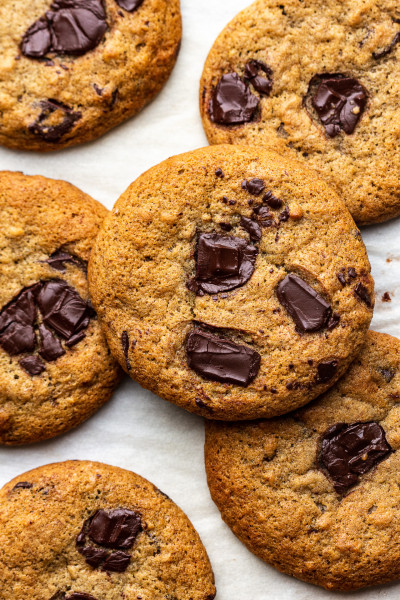
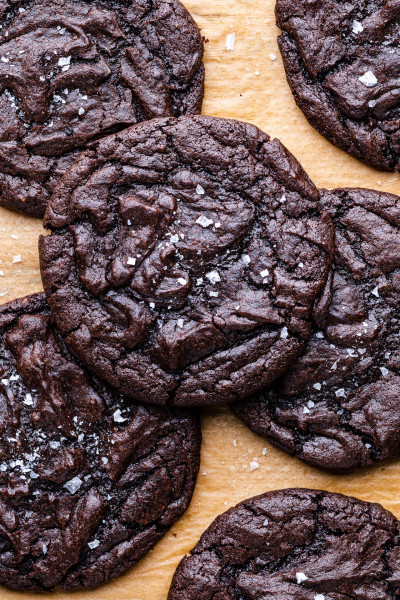
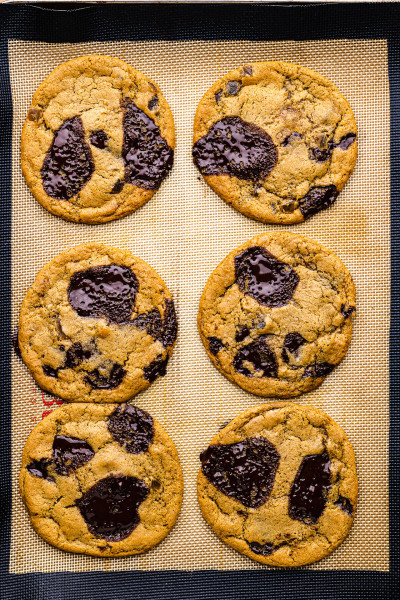
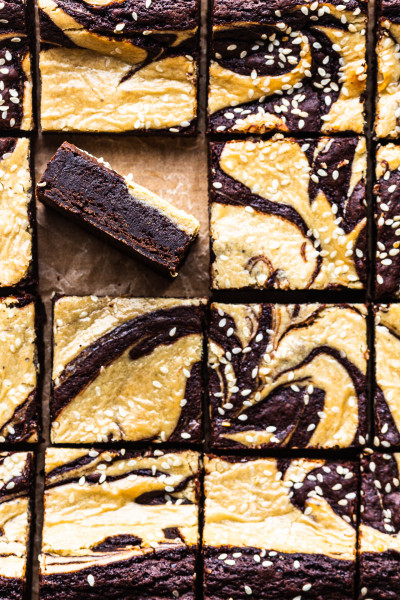



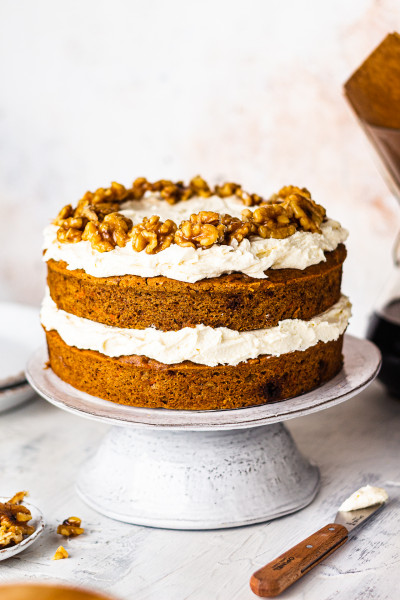
Would it be possible to leave the dough in the fridge for 24 hours instead of overnight?
Thankyou 🙏🏻
Yes, that should work well - in fact, this is a common practise for many bakers. If it's really puffy at 12 hrs, I would punch the air out of it and return it to the fridge for another 12 hours. Hope this helps! Ania
The ends get discarded - it's usually just dough, no filling. Hope this helps! Ania